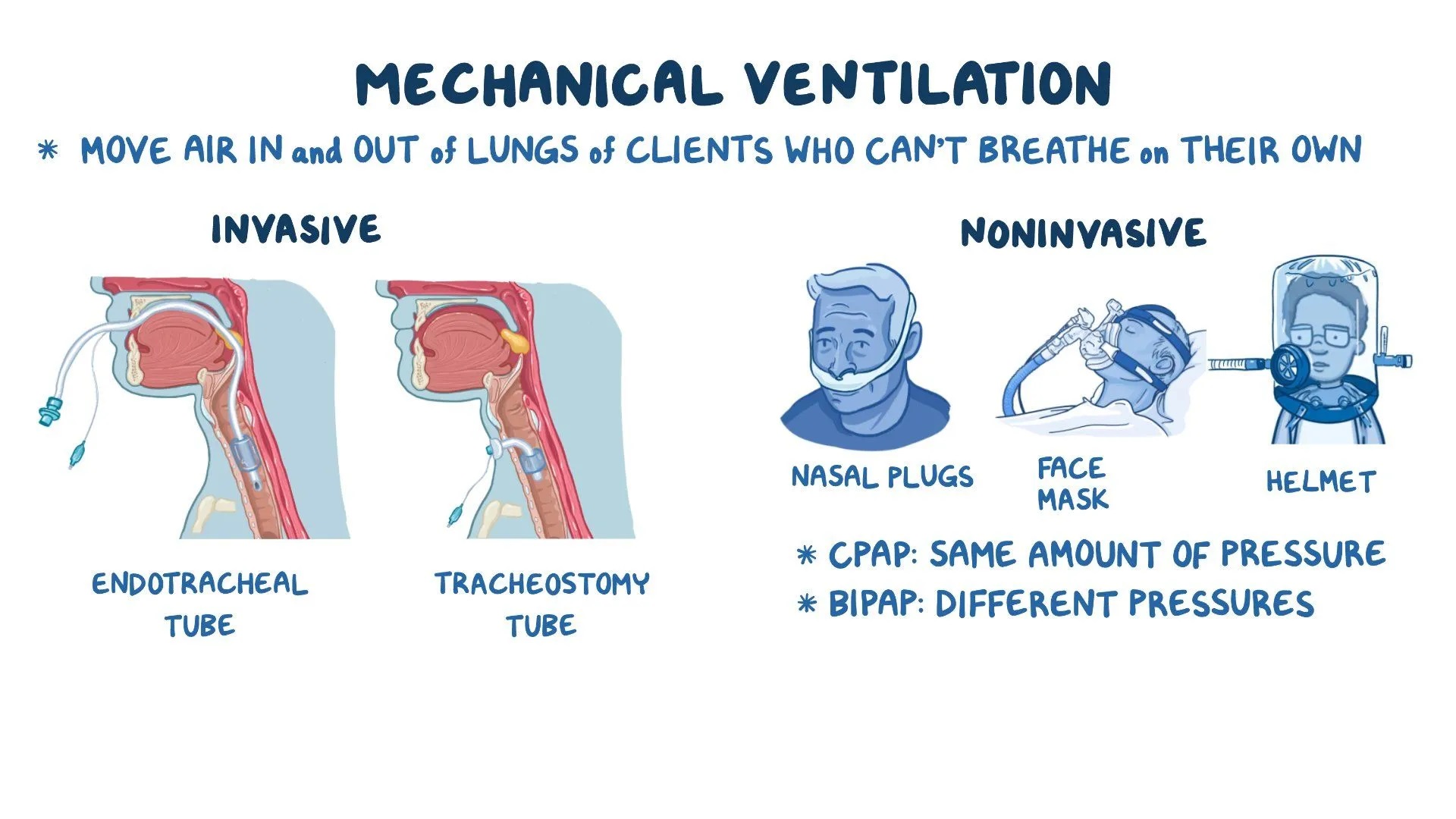Mechanical ventilation is a form of treatment for patients who cannot breathe on their own. In order to maintain proper levels of oxygen and carbon dioxide in the body, some level of ventilation is required. This process is called gas exchange.
Mechanical ventilation is to maintain airway patency, improve ventilation and oxygenation, prevent hypoxia and carbon dioxide accumulation, make it possible for the body to overcome respiratory failure caused by underlying diseases, and create conditions for the treatment of underlying diseases with the help of a ventilator. Mechanical ventilation is the use of mechanical devices to replace, control or change the spontaneous breathing movement of a ventilation mode. It is a form of life support intended for short-term or long-term use by critically ill patients in the intensive care unit (ICU). It is commonly used to treat patients with heart and lung disease, but is also used after surgery for patients recovering from anesthesia and sedation.
In general, when someone mentions mechanical ventilation, they are usually referring to traditional positive pressure ventilation. The following are examples of all types of mechanical ventilation:
Positive pressure ventilation
Negative pressure ventilation
Invasive mechanical ventilation
Non-invasive mechanical ventilation

Reasons for patients to use medical Ventilators include:
1. Get a high concentration of oxygen into the lungs
2. Help eliminate carbon dioxide
3. Prevent the patient from expending respiratory energy needed to recover or fight infection
4. Breathe for people who are unable to breathe on their own due to a nervous system injury or severe muscle weakness
5. Breathe for a patient who is unconscious due to infection, an overdose of toxins or substances in the body or drugs
What is flow rate in mechanical ventilation?
The flow setting in mechanical ventilation is also called the suction flow rate. It is the rate that controls the speed at which the machine delivers tidal volume. This is the setting of the ventilator, which can be adjusted according to the patient's aspiration needs and requirements.
The normal suction flow rate should be set at about 60 L/min. Having said that, if patients require extended expiratory time, which is necessary when obstructive disease is present, most ventilators can provide up to 120 L/min of flow.
If the flow rate is set too low, it may result in man-machine synchronization and increased respiratory work. If the flow rate is set too high, the average airway pressure may decrease.
To place a person in a medical ventilators, endotracheal catheters are inserted into the patient's nose or mouth and passed down through the trachea or windpipe. It can also go directly into the windpipe. The other end of the tube is connected to a ventilator, which then pushes oxygen and air into the patient's lungs. It can also apply a persistently low pressure, called PEEP, or positive end-expiratory pressure, to prevent the balloon from collapsing. Patients are usually in intensive care units and closely monitored while on life support ventilators.
It should be understood that mechanical ventilation does not actually cure patients, but it can allow them to heal, progress or regain consciousness because their bodies do not need to expend much extra energy to breathe. Ventilators have been an important strategy for reducing mortality from the COVID-19 pandemic and will continue to be used as a lifesaving measure in the future. A variety of ventilators and other vital medical equipment, supplies and accessories are provided.